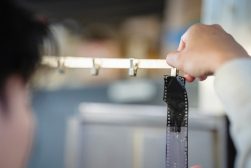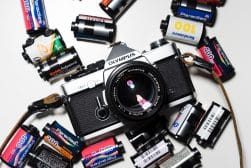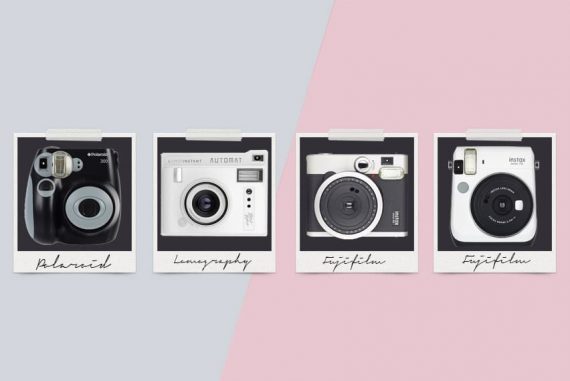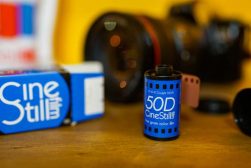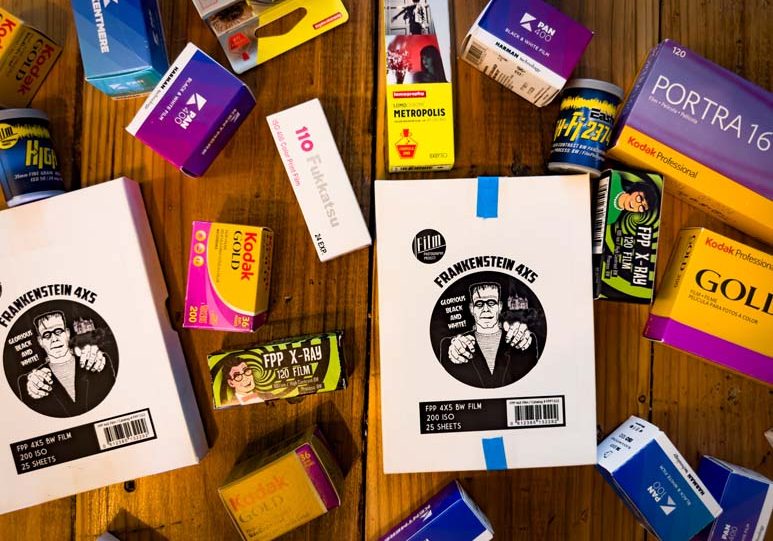
Comparison of All Common Film Formats & Sizes in 2023
Join us in an exhaustive comparison of various film formats and sizes, from 35mm to large format, capturing the nuances and distinctions of each.
Film Photography | Learn | By Ashley Darrow
Knowing the differences between the most popular film formats that are still around today is essential to successful analog photography.
I’m going to walk you through 35 mm, medium format film, 110, and even large format film to get you acquainted with the basics.
Film photography is in the middle of a renaissance.
With digital photography being so dominant, photographers can offer something special for their clients—as well as their approach to the art form—by shooting film.
I’ll admit, I still do most of my shooting digitally, but film has become the most important aspect of my photography.
I’m now shooting everything from my tiny Pentax a110 all the way up to my Horseman large format camera.
Here’s everything you need to know to get acquainted with the basics of different film formats.
Related articles for lovers of film:
Table of Contents
What are the Most Common Film Formats Available in 2023?
35mm Film (Also Known As 135 Format Roll Film)

- The most popular of all film formats
- The most affordable
- Film stock options ranging from experimental, to budget, to high-end
- Used by students and professional photographers alike
- 35mm film format cameras are often the easiest to shoot with
- Commonly available in bulk 100-foot rolls
- Doesn’t stand out as well as other photographic film formats
- Less details than medium and large formats
The 35 mm film format is easily the most popular analog film type available today. In fact, it’s been the most popular film format since the 1960s.
35mm film measures 24mm by 35mm in size. This might sound familiar to all you digital photographers out there since that’s the standard size of a full-frame mirrorless or DSLR camera.
This film format was so popular that it wound up defining how we understand digital photography as a medium!
George Eastman—that last name should sound familiar—first produced 35mm film back in the 1880s. However, it wouldn’t be until movie studios embraced 35mm film as their default that this size became a standard for both film and still photography.
Nowadays, you can find 35mm in rolls of 24 or 36 exposures. There’s a 35mm roll out there for everyone from artistic black and white film to experimental film stocks with distorted effects.
120 Film (220 and the World of Medium Format Film)
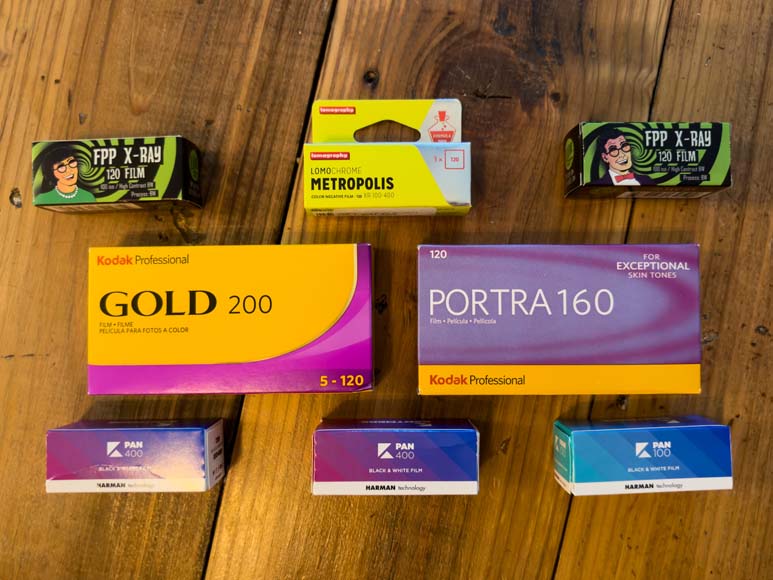
- Higher resolution compared to 35mm and 110
- You get to use some unique vintage cameras—and modern ones too
- Nearly as many different film stock varieties as with 35mm
- 120 has a variety of aspect ratios compared with 35mm
- Cameras require more skill to shoot with
- Film costs are higher on a per-shot basis
120 has the distinction of being the only medium format film stock still in popular production. Though you can find other medium stocks for sale, 120 is by far the most common.
120 film was originally rolled out— pun intended—by Kodak in 1901 to go with their Brownie camera line. I have a Brownie from the early 1900s and it still shoots beautifully!
Medium film formats have fewer shots per roll and are notably harder to handle than 35mm. These film stocks require manual winding, and loading, and they are more prone to light leaks and other issues.
However, they capture images that the smaller 35mm just can’t handle.
While 35mm might have a few toy cameras that support different ways to use the 35mm frame, the 120 format is defined by its diversity.
Here are just a few of the ways you can shoot 120:
| Size in CM | Aspect ratio | Exposures |
| 6 × 6 | 1:1 | 12 or 13 |
| 6 × 7 | 1:1.25 | 10 |
| 6 × 8 | 1:1.37 | 9 |
| 6 × 9 | 1:1.50 | 6 |
| 6 × 12 | 1:2.1 | 8 |
| 6 × 17 | 1:3 | 4 |
| 6 × 24 | 1:4 | 3 |
Each of these aspect ratios is set by the camera you’re shooting with—not the film itself. The same roll of 120 can net you 12 shots in a 6×6 camera or 3 massive panoramas in a 6×24 configuration.
127 Film
- Introduced as the more portable version of 120
- Still enjoys niche use from fans of underloved film formats
- Better image quality than with 35mm
- Pretty expensive
- Very rare in terms of both the film and the cameras that can use it
127 got its start as the portable, more affordable alternative to the 120 medium format film that was standard at the time.
127 is also noticeable for shooting in a square format that we don’t typically encounter in much of photography.
This medium format film stock affords us the opportunity to think outside the box shooting with a frame that we don’t usually work with.
Working cameras that shoot 127 or a little hard to come by.
However, if you do manage to find a working 127 camera, there are plenty of online guides that can teach you how to adapt 35 mm film to a 127 camera so you’re not always hunting around for a rare film stock to shoot with.
110 Film (Spy Camera Film)
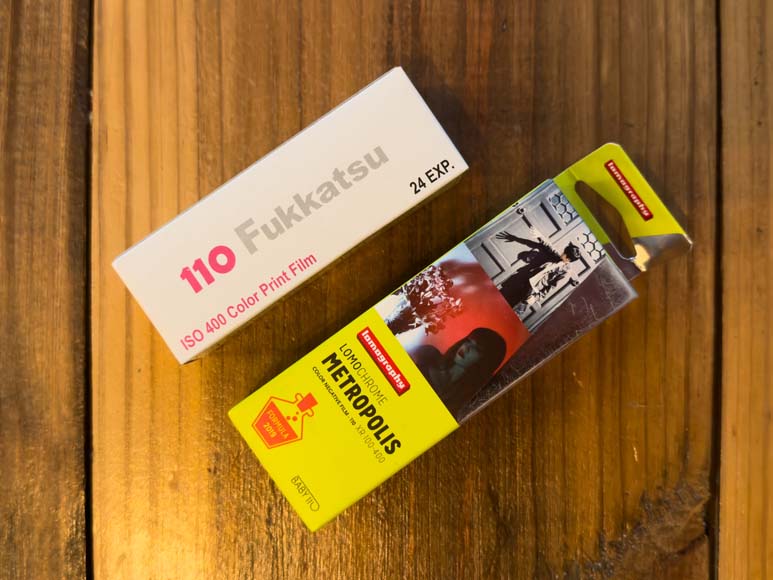
- Arguably the most portable of all film formats
- Perfect for fans of lomography and the lo-fi aesthetic
- Explore the world of toy cameras
- Plenty of film stocks still in production
- Image quaitly not great
- Costs more to develop in a lab
I’m not going to lie, 110 is one of my favorite film stocks to shoot with.
The 110 film format was introduced in the 1970s to go along with a range of ultra compact cameras that could fit in your pocket.
Companies quickly jumped on the 110 bandwagon to create countless promotional and toy cameras and a variety of interesting designs including soda cans and lighters.
The Pentax A110 is the only professional 110 format camera with interchangeable lenses. It’s also incredibly fun to shoot with.
Each 110 negative is about the size of a fingernail which means that your resolution is going to be low, but you are going to capture a dreamy Lo-Fi aesthetic.
110 film is fairly expensive to develop, but it is still popularly produced today by a variety of Brands including Lomography.
4×5 and 8×10 (Large Format Film)
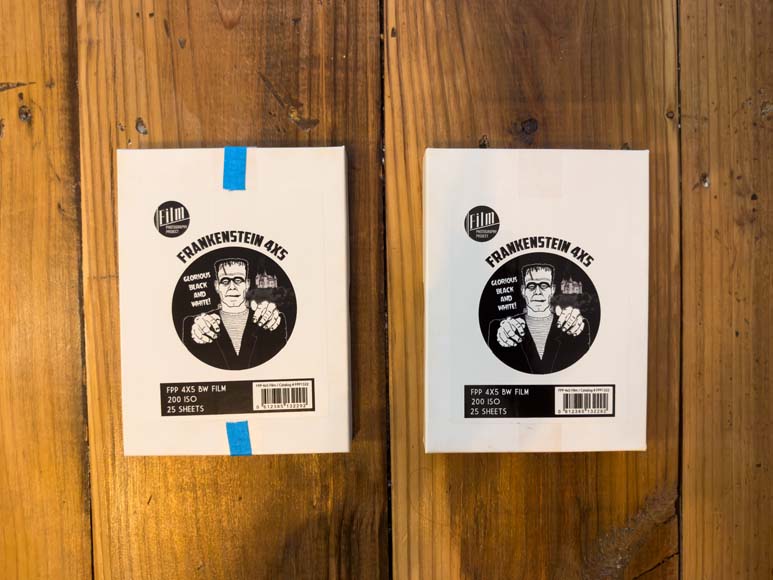
- Resolution technically higher than most digital cameras and all other film formats
- Still widely produced
- Shoot like Ansel Adams wherever you go
- Gets you in touch with the history of film photography
- The film is expensive, but the cameras and lenses are even more expensive
- It’s unlike any other shooting experience you’ve ever had—get ready to learn a new skill set!
The two most common large format film types are 4×5 and 8×10—those are both measured in inches! Large format film is also known as sheet film since it’s about the size of a sheet of paper.
4×5 film is about 15 times larger than 35mm meaning it has about 15 times more resolution. If you want maximum detail, you can’t go wrong with large format.
There are also so-called “Ultra Large Formats” or ULFs. These include any frame size bigger than 8×10, but they are all custom-made.
Shooting large format isn’t for the faint of heart. You’re working with photographic technology that predates rolled film.
In order to get a good shot with large format, you need to have a much deeper knowledge of the exposure triangle and manual focusing than you would need with any other type of photography film or digital.
With that said, I love taking my 4×5 camera out for a spin and, yes, part of this is watching people’s reactions while I set up and focus an old timey bellows camera.
Instax, Polaroid and other Instant Film Stocks
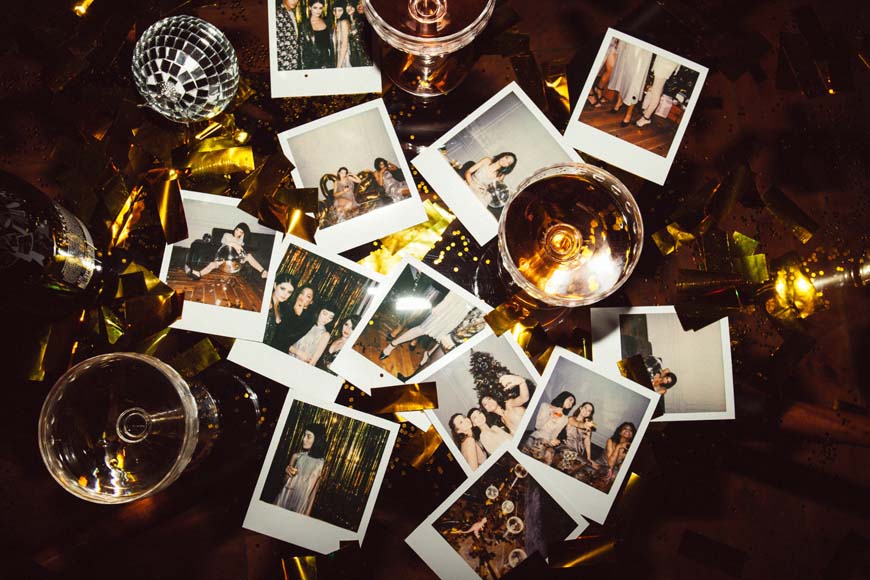
Image Credit: cottonbro studio
- Incredibly fun to shoot
- Great for event or wedding photographers looking for a fun add-on
- Instant film has an unmistakable character
- Still widely produced and fairly affordable
- The resolution tends to be pretty low
- You need to get the instant film stock that matches your camera size and brand
I love shooting instant film. Nothing beats taking an old-school Polaroid for a spin on a day out with friends or even hauling one on a vacation.
I also shoot a lot of Fuji Instax film. There’s a portable Fuji printer that works with your smartphone which means that you can turn pictures taken on your smartphone into instant film prints.
Instant photographs are great for handing out during street photography or spur-of-the-moment shoots.
They’re also great for decorating, using his gifts, or just placing around your studio.
These definitely aren’t going to give you the clearest images with the most colors, but there’s definitely a nostalgic quality to instant film that hasn’t been replicated by anything else.
Instant film is still widely produced today by popular brands like Polaroid and Fuji. \There are also smaller companies working to create instant film stocks for cameras that currently do not have any available film such as vintage Polaroid cameras.
There are even instant film options for medium-format and large-format photography.
These are adapters that you can put on the back of your medium format camera or large format camera to convert them from shooting 120 or 4×5 into instant film.
I’d say don’t underestimate the potential of instant film and see what you can accomplish with its unique artistic quirks.
8mm and 16mm Movie Film
- Shoot analogue movies with your fav retro cameras
- The look is always more authentic than with Super 8 filters
- Shooting film is a unique experience you should try at least once
- Developing movie film at home really gets you in touch with the roots of cinema
- Reliable movie film cameras are hard to come by
- Film and developing costs can be prohibitive
Last but not least, I wanted to mention movie film.
I regularly shoot Super 8 and I finally believe this is something more still photographers should consider.
Many 8 mm and 16 mm film cameras even allow you to shoot single frames at a time letting the camera double as a still photography camera as well as a movie camera.
8 mm and 16 mm film stocks are still both commonly manufactured and have a reasonable cost even if they are a little expensive.
You can find both of these formats and color as well as black and white film.
Here’s a little hack I wish I knew when I first started shooting movie film.
You can buy expired movie film and develop it in coffee even if it’s a type of film that can no longer be commercially developed today.
This gives you a way to pick up movie film that won’t break your budget.
What’s the Difference Between Each Film Format?
What’s the difference between each film format? In my experience, here are the three things that you should consider.
Resolution
Resolution works a little bit differently with analog film photography than it does with digital photography. The best way to talk about film resolution is to talk about the most common film stock: 35 mm.
So, how many megapixels are in a single frame of 35 mm film?
There’s no true, direct way to calculate the megapixels in a 35 mm frame, but we can make an analogy by figuring out how much scanning power we would need to get all of the information out of 35 mm film.
The film stock Fuji Velvia 50 resolves 160 lines per millimeter. That’s technical film talk for “Fuji Velvia 50 has great resolution.”
In order to scan all of the information out of a properly exposed frame of Velvia 50, you’d need a scanner capable of somewhere between 87 and 175 megapixels. That puts the best mirrorless cameras to shame!
If we take a look at a single sheet of 4×5 large format film, things get even bigger. A digital camera would need 2 gigapixels to match the resolution of properly exposed 4×5.
In short, the bigger the film, the higher the resolution.
Availability
Arguably the biggest challenge I’ve had working with film hasn’t been learning how to properly operate these cameras, but has been finding these cameras in the first place.
Film stocks and cameras that can shoot them are getting harder to come by. This combines with a film photography renaissance that drives up prices and makes working cameras even more scarce.
35 mm is going to be the most budget-friendly and accessible format that you can shoot with. you can get a high-quality 35mm camera on your favorite online resale website for less than $20.
The price is only going to go up with the other film formats. Large format, especially 8×10, is going to be the most expensive that you can shoot.
With all of this said, a fully kitted out 4×5 setup is still going to cost you around what you would spend if you bought the latest digital photography equipment brand new from the store.
Ease of Use
One of the biggest benefits of digital photography is that you can just point and shoot. All of that software inside of your camera does the heavy lifting for you so that you can focus on artistic composition rather than the exposure triangle.
The move back to film formats means getting back in touch with how we produce the final image.
35 mm cameras, especially more modern ones, can handle a lot of that same exposure calculation that we see in digital cameras.
Medium format and large format cameras typically don’t have those abilities built in. You’ll either be right lying on a light meter to calculate your own exposure or using rules like Sunny 16 to give it your best guess.
In short, I’d again say start with 35 if you’re looking for the most accessible and easy-to-use film format.
Wrapping Up Common Film Stocks for Film Photography
I’ve covered all of the most common photographic film formats that are still in mass production. However, the world of film photography is expansive with a rich history and plenty to explore.
Let me know in the comments if you have any questions about film photography, or film photography equipment, or if you want to know more about some of these film stocks.
I’ll make sure to address your answers and upcoming guide and, in the meantime, make sure to check out my other photography articles here on Shotkit.





